Barbara Hepworth: Photography and the Archive
Tuesday 13 April 2021, 3 - 5pm
From 1925 until her death in 1975, Barbara Hepworth kept a comprehensive account of her sculptural practice in the form of record books. Recently digitised by Tate, these books, for the most part organised year-by-year, provide information for each sculpture she made detailing medium, dimensions, exhibitions and sales. A very significant number of the books also include at least one photograph of each sculpture.
Not only do these records provide an important resource for determining the scope of the artist’s oeuvre and monitoring any changes to her sculptures following their completion, they provide us with invaluable insight into how the artist understood these objects herself, in terms of the information she chose to retain of them.
This workshop hosted by the Hepworth Research Network focused specifically on the visual record of her sculptures that Hepworth retained. Bringing together a range of experts on photography and sculpture from the fields of academia and practice, the event examined the photographs in the record books as objects in their own right, exploring their own material qualities and also their connections to the wider dissemination of Hepworth’s sculptural practice in two rather than three dimensions. We also looked at Hepworth’s engagement with photography more broadly, and what can be learnt from the many studio photographs that document her practice.
Schedule
3-3.50pm Panel One
- Alice Correia (Independent): ‘Barbara Hepworth and Charles Gimpel: Photographing a Personal and Professional Relationship’
- David Bate (University of Westminster): ‘Father and Child’
- Charlotte Moth (Artist): ‘Choreography of the Image’
3.50-4pm Break
4-4.40pm Panel Two
- Anne-Katrin Purkiss (Photographer):’Examining Barbara Hepworth’s Studio Records and Photographs of her Sculpture’
- Megan R. Luke (University of Southern California): ‘Barbara Hepworth and Carola Giedion-Welcker’
4.40-5pm Final discussion, the Hepworth Research Network website and future plans
Abstracts
Alice Correia: ‘Barbara Hepworth and Charles Gimpel: Photographing a Personal and Professional Relationship’
This paper will consider the relationship between Barbara Hepworth and her dealer, Charles Gimpel. When Hepworth signed a contract with the London gallery Gimpel Fils in 1955, she quickly developed a close friendship with its directors, brothers Charles and Peter Gimpel, and Charles’s wife Kay, who was the gallery’s manager. Charles was a prolific amateur photographer, and would regularly photograph Hepworth, her studios and her sculptures during visits to St. Ives. Personal and professional relations were blurred: what kinds of power dynamics are at play when an artist is photographed by their dealer? What might Gimpel’s photographs tell us that other [professional] images do not?
David Bate: ‘Father and Child’
The photographs of Barbara Hepworth’s sculptures enable us to see and think about their material form and meanings in a particular way. Transformed into monochrome tones and shapes they offer ‘points-of-view’, which offer insight into how they were seen. In the photographs of a work called Father and Child, two forms stand next to one another in contrasting shapes and size. One has a hole the other does not. What might such configurations suggest in the work of Hepworth, and in the vision of them by the camera?
Charlotte Moth: ‘Choreography of the Image’
I would like to share with you all a series of images about the work and research I made for my presentation in the archive gallery at Tate Britain in 2015 titled Choreography of the Image. I see the ten minutes that I have as a moment to talk through each of the ten inserts, the selection of images and material, which give an insight into Hepworth’s sculptural notes and records, works and life. I will end by showing briefly the second stage of the work in the Lietchenstein exhibition 2016, revealing the transformation from research to finished work through a substitution of archive material by photographs that I took through my own trips to research the various sites that were found in the sculptural records.
Anne-Katrin Purkiss: ‘Examining Barbara Hepworth’s Studio Records and Photographs of her Sculpture’
I propose to look at Barbara Hepworth’s photographic records from a photographer’s perspective, drawing comparisons to my own experience of working with contemporary sculptors. Photographic records of an artist’s work can not only be assessed on the basis of what they show, but also for what they do not show and why. My presentation will look at the questions I would ask, as a photographer, in order to place Hepworth’s photographic records in a wider context.
Megan Luke: ‘Barbara Hepworth and Carola Giedion-Welcker’
My presentation will focus on the photographs exchanged between Barbara Hepworth and the German-Swiss art historian and literary critic, Carola Giedion-Welcker. Giedion-Welcker included photographs from Hepworth’s sculptural record books in her watershed survey, Modern Plastic Art: Elements of Reality, Volume and Disintegration (1937) and the revised and enlarged edition, Contemporary Sculpture: An Evolution in Volume and Space (1955). Hepworth, in turn, published photographs taken by Giedion-Welcker at Stonehenge with her essay, ‘Sculpture’ in Circle: International Survey of Constructive Art (1937). I shift focus from the procedures by which these photographs mediate the materiality and form of the sculptural monoliths they depict to explore instead how Hepworth and Giedion-Welcker treated these images as concrete visualizations of the other’s perception. Central for my analysis will be Giedion-Welcker’s writing on the prehistoric stones and folk cultures of Cornwall and Hepworth’s description of herself ‘becoming an object’ in the act of making published in Carvings and Drawings (1952).




